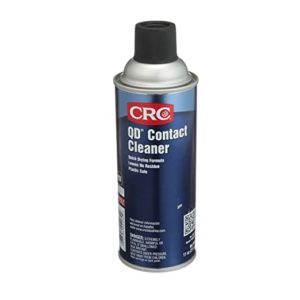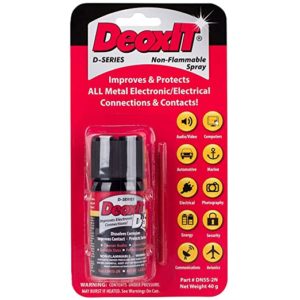There are two kinds of radio orienteering equipment: that which is experiencing electro-mechanical problems; and that which will experience electro-mechanical problems. You know the symptoms: volume controls sound scratchy, frequency controls cause unpredictable jumps, earphones sometimes don’t provide sound, and buttons and switches need to be jiggled before they will operate. Your previously reliable transmitter or receiver can no longer be counted on to function. Disaster! But there is a way to avoid most of those problems.
The Cause
Electro-mechanical parts will suffer whenever electronic equipment is placed in humid or dusty conditions. Electro-mechanical parts include buttons, switches, potentiometers, adjustable capacitors, jacks, and plugs. Pretty much anything that moves and contains mechanical wipers or contacts belongs in the electro-mechanical category.
Electro-mechanical components that are not hermetically sealed are vulnerable to the effects of humidity and dust. That’s because those devices rely on their surfaces remaining clean and electrically conductive. Oxidation occurs when these surfaces are exposed to the air, especially moist air. Impurities collect on surfaces when the air surrounding them contains dust or aerosols, and air always contains some level of moisture and dust. Oxidation and impurities are poor conductors of electricity and will eventually result in intermittent contact between otherwise-conductive surfaces.
Keeping your equipment clean, and storing it in a dry and clean location, will delay the onset of problems. But, eventually, the day will come when problems arise. Fortunately, there is usually a cure.
The Solution
Contact cleaners can save the day. Contact cleaners are available in spray cans or liquid dispensers sporting small nozzles or applicator brushes. Just about any contact cleaner product that advertises itself as safe for electronics and plastics will effectively remove oxidation and contaminants from electro-mechanical components and thereby restore them to normal operation. It is just a matter of figuring out how to get the cleaner to the surfaces needing cleaning. Sometimes that is easily accomplished, but some components prevent access to their innards where those surfaces are located. Applying generous amounts of contact cleaner to the outside of an electro-mechanical component while operating it will usually result in the contact cleaner working its way into the component and reaching the surfaces needing a good cleaning.

Some contact cleaners are “no residue.” After application, they dry completely, leaving nothing behind. No-residue cleaners perform their cleaning action only while they are in contact with a surface, helping to dissolve and remove contaminants where surfaces rub against each other, and then they are gone. No-residue cleaners are good for cleaning plugs and exterior surfaces where you don’t want to have anything that might get on your hands.

Other contact cleaners leave behind a protective film. These products are sometimes called “lubricating.” After their solvents have dispersed, a thin protective layer remains that lubricates and helps delay oxidation’s return. Lubricating contact cleaners are well-suited for equipment that will spend part of its life outdoors or in moist conditions.
Both no-residue and lubricating contact cleaners can be applied preventatively before problems occur. The periodic application will help avoid unexpected equipment problems. Despite being safe for plastic, both types of products contain solvents that might dissolve paints, dies, and ink. So avoid getting them on any vulnerable markings you have applied to your equipment.

I have a no residue cleaner advertised as safe for plastics and it is fantastic for cleaning wax pencil marks off map boards leaving the board ready to accept new wax pencil marks.